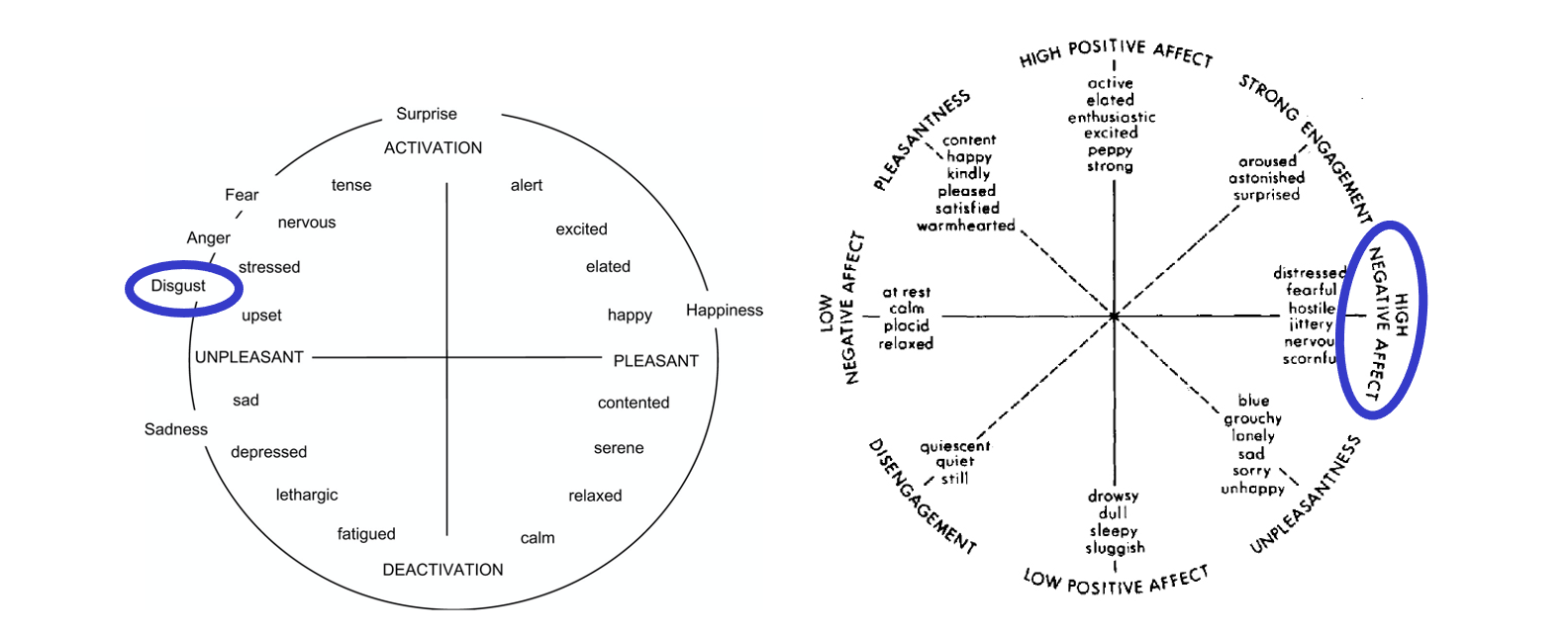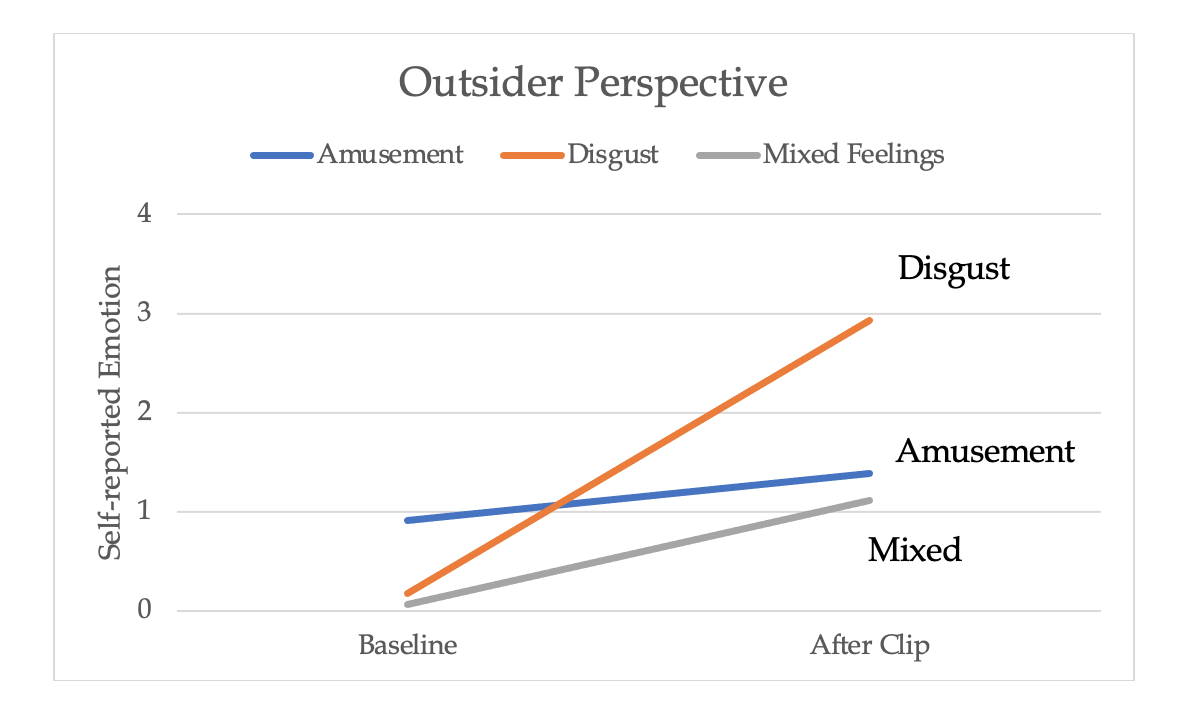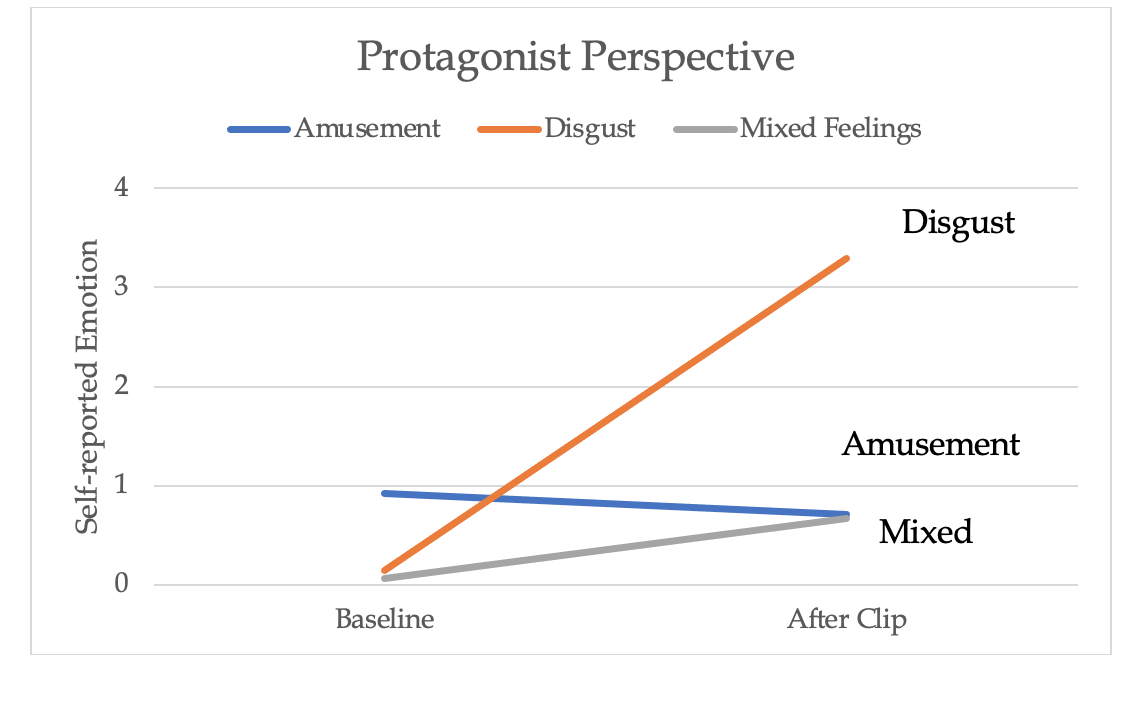Chapter 10: Disgust
Subjective Feelings
Russell (1980) views disgust as a highly unpleasant, moderately arousing emotion. Per this model, disgust is about equal in valence to anger and fear, but lower in arousal. Disgust’s location as moderately arousing may fit with the physiological research above finding that disgust activated both SNS and PNS systems.
Both Russell (1980) and Watson and Tellegen (1985) view disgust as a highly arousing, unpleasant emotion (see Figure 16). Although Watson and Tellegen (1985) do not provide a specific location for disgust on their model, disgust did load on the high negative affect factor (as did similar emotions list anger/hostile, and contempt).
Figure 16
Dimensional Models of Anger

Long Description
The image consists of two circular diagrams illustrating dimensional models of emotions, specifically focusing on anger. On the left, a circular model is divided into four quadrants by vertical and horizontal lines, representing the axes of Activation-Deactivation and Pleasant-Unpleasant emotions. Emotions like “surprise” and “happy” are at the top and right sides, associated with activation and pleasantness, while “sadness” and “calm” are at the bottom and left sides, linked to deactivation and unpleasantness. “Disgust” is highlighted with a blue circle in the unpleasant category.
On the right, a similar circular model is divided into quadrants marked by axes labeled High Positive Affect-High Negative Affect and Pleasantness-Unpleasantness. Emotions such as “active” and “content” are on the positive half, while “distressed” and “blue” are on the negative side. “High Negative Affect” is highlighted with a blue oval.
Note. Russell (1980) model is on left; Watson and Tellegen (1985) model is on right. Left figure reproduced from “Independence and bipolarity in the structure of current affect,” by L. Feldman Barrett and J.A. Russell, 1998, Journal of Personality and Social Psychology, 74(4), p. 970 (https://doi.org/10.1037/0022-3514.74.4.967). Copyright 1998 by the American Psychological Association. Right figure reproduced “Toward a consensual structure of mood.,” by D.T. Watson and A. Tellegen, 1985, Psychological Bulletin, 98(2), p. 221 (https://doi.org/10.1037/0033-2909.98.2.219). Copyright 1985 by the American Psychological Association.
One study investigated the mixed emotion state of disgust and amusement (Hemenover & Schimmack, 2007). In this study, participants watched a video of a female character eating dog feces in a funny way. Participants were randomly assigned to imagine being the female character while watching the clip OR to view the clip as an outside observer. In both point-of-view conditions, participants reported an increase in self-reported disgust from baseline. But, only in the outsider perspective did participants report an increase in mixed feelings of disgust and amusement (see Figure 17). Taken together, these results show that when we view someone else engaging in disgusting behavior, that elicits mixed subjective feelings of disgust and amusement. But, when we imagine doing something disgusting and when we experience disgust, that elicits mostly disgust and not amusement.
Figure 17
Self-Reported Emotions for Outside and Protagonist Perspectives (Hemenover & Schimmack 2007)

Long Description
The image is a line graph titled “Outsider Perspective” depicting self-reported emotions with a y-axis labeled “Self-reported Emotion” ranging from 0 to 4, and an x-axis labeled with “Baseline” and “After Clip.” Three lines represent different emotions: a blue line for Amusement, an orange line for Disgust, and a gray line for Mixed Feelings. The orange line shows a sharp increase from Baseline to After Clip, reaching the highest point on the graph. The blue line representing Amusement shows a slight increase, while the gray line for Mixed Feelings starts low and increases slightly.
Long Description
The image is a line graph titled “Protagonist Perspective,” showing self-reported emotions across two conditions: Baseline and After Clip. The y-axis is labeled “Self-reported Emotion” and ranges from 0 to 4. Three lines represent different emotions: Amusement (blue), Disgust (orange), and Mixed Feelings (gray). At the Baseline, all emotions start at 1. After the clip, Disgust increases sharply to 4, while Amusement slightly decreases to around 0.8. Mixed Feelings rises modestly to 1.5.
Adapted from “That’s disgusting!…, but very amusing: Mixed feelings of amusement and disgust,” by S.H. Hemenover and U. Schimmack, 2007, Cognition and Emotion, 21(5), p. 1107 (https://doi.org/10.1080/02699930601057037). Copyright 2007 by Psychology Press.


